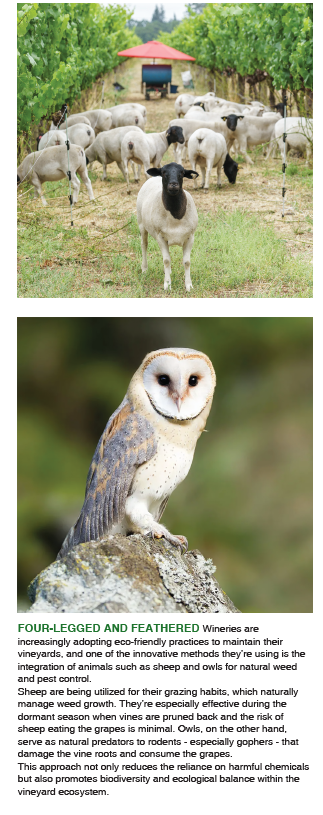The month of April is Earth Month and April 22 has officially been designated as Earth Day since 1970. While there are all kinds of community events happening globally to plant trees and clean up littered land areas, beaches and waterways, Earth Month is also a great time to support the wineries around the world that are producing wines in an earth-friendly manner.
When thinking about what is the most earth-friendly, there is a lot to consider. Wines may be produced conventionally which is often the least eco-friendly as this means synthetic pesticides, herbicides, and fertilizers may have been used. Certified organic and biodynamic wines do not permit any of those things.
There is also a somewhat new category called natural wine. Natural wine is typically made with organically grown grapes and with minimal intervention, no fining, filtering, or sulfites added, just pure fermented grape juice.
Because natural wine is not a legally defined category, this may vary by producer and many smaller production wineries use these same low-intervention practices without using the term “natural wine.”
There are many ways a winery can be earth friendly. Increasing biodiversity around vineyard areas to create a healthier environment, building birdhouses for owls to combat rodents, and dry farming grapes to conserve water are all earth-friendly techniques employed in many grape-growing areas.
Modern packaging like boxed and canned wine and the move to lighter weight bottles are all eco-friendly practices that are being employed by conscientious producers.
The percentage of sustainably grown grapes gets larger every year. Sonoma County in California now boasts that 99% of all its vineyards are certified sustainable and the country of New Zealand has 98% sustainably certified vineyards. This trend is gaining popularity worldwide.
Sustainably grown grapes are environmentally sound and take into account a variety of important issues beyond minimizing pesticide use. Examples include taking measures to protect fish and wildlife through water conservation and taking into consideration the human factor regarding social responsibility and economic viability.
Look for certification symbols on the bottle like “Certified Sustainable” or “SIP Certified- Sustainability in Practice” along with many others. The growth in the number of sustainable wineries should be celebrated.
 Many wineries are on a path to go organic following their sustainability certifications. Some use organic practices but never become certified.
Many wineries are on a path to go organic following their sustainability certifications. Some use organic practices but never become certified.
To become certified organic in the United States, both the vineyard and the winery must be fully organic. That means, in addition to organically grown grapes, everything used in the winemaking process must be organic.
For example, the yeast for fermentation must be organic and there can be no added sulfur which winemakers use to protect and preserve wine.
Wines may also be labeled with “Made with Organic Grapes” which means the grapes used were 100% organic, but the winery may have used sulfur or a non-organic yeast. Regardless of origin, all wines sold in the U.S. must meet the USDA standards to be labeled as organic.
Biodynamic practices go even further than organic with their holistic approach to agriculture. Biodynamic vineyards work to be self-sustaining with everything used coming from within.
This includes the plants, soil, and animals all working in unison as the soil grows the plants that feed the animals and the animals produce manure to fertilize the soil and plants.
There are also lunar and astrological elements and some unusual preparations that are often scoffed at by more conventional producers, but the regulations do produce healthy vineyards. The Demeter Biodynamic certification is also expensive so many wineries follow some or all of these practices without becoming officially certified.
Worldwide, Spain leads the organic wine revolution with over 350,000 acres being grown organically. There has been an increase in the demand for organic Cava, in particular, with new regulations stipulating that all wines produced in the higher categories like Reserva and Gran Reserva will be 100% organic by 2025.
France is close behind with over 337,000 acres grown organically. Italy has approximately 256,000 organic vineyard acres. The United States is in fourth place worldwide with almost 68,000 organic acres.
Going completely organic in the vineyard is much more difficult in some regions. The greater expenses to winemakers lead to smaller yields which, in turn, lead to greater expense for consumers. Getting an organic certification is another additional expense.
There are, however, some very affordable brands. Bonterra, California’s largest producer of organic wine, King Estate in Oregon, Domaine Bousquet in Argentina, and Emiliana Vineyards in Chile, all make affordable organic wines.
Numerous family-owned, high-quality, small-production wines are organically produced as well. There is an earth-friendly wine for every wine lover at every price point.
This Earth Month when choosing wine, ask for earth-friendly wines to celebrate this global effort that started over 50 years ago and toast to yourself for helping make the world a little better with each sip.